Sign up to our newsletter Subscribe
Analysing Global Immunisation Expenditure

Sign up to our newsletter Subscribe


Rare Disease Day is observed on the last day of February every year, and today – February 29th – is truly the rarest day.

OHE has been actively considering the implications of rare or ‘orphan’ diseases for more than two decades. Here, we reflect on progress and highlight the remaining challenges. The EU Pharma Legislation reforms and the introduction of the Inflation Reduction Act in the US are key areas where the debate will continue this year.
Origins of Rare Disease Day
The annual event was launched by EURORDIS (Rare Disease Europe and its Council of National Alliances) in 2008, to raise awareness among the public and decision-makers about rare diseases and their impact. The central aim is to advocate for equitable access to diagnosis, treatment, care, and social opportunities.
So, why is this needed? Because access to diagnosis, treatment, care, and social opportunities is not equitable for individuals with rare disease, compared with those suffering more common diseases:
The reasons for this inequality may seem obvious: a rare disease, by definition, affects few people. That means that medical expertise is low, knowledge is scarce, and research is lacking. In addition, around 80% of rare diseases are of genetic origin, and 70% start in childhood. Spotting the signs and accessing genetic testing is complicated (and costly). Moreover, advances in knowledge and treatments come at high cost and relatively low reward, globally speaking, because of the small patient populations impacted. However, this is a challenge that needs solving, as rare diseases are individually rare but collectively common.
A “rare disease” is one that affects fewer than one in 2000 people. 85% of rare disease affect fewer than one in a million. Collectively, however, there are over 7000 (known) rare diseases, and they affect 300 million people worldwide. To not exert global efforts to advance opportunities to tackle the rare disease challenge would therefore do a great disservice to the hundreds of millions of people impacted by a rare disease.
What has OHE done in the rare disease space?
Most of our work has been around the treatment challenge. Insights from past research coalesce around two major themes: appraisal and incentives.
1. Appraisal: Special considerations needed for evaluating and valuing drugs that treat rare disease
Many countries have adapted technology appraisal criteria or processes for funding decisions about drugs that treat rare disease (so called “Orphan Medicines”), in recognition of some of the inherent challenges around:
In England, this is embodied by the creation in 2015 of the Highly Specialised Technology (HST) programme, which evaluates drugs that treat ultra-rare conditions (affecting fewer than 1 in 50,000 people). The programme uses a higher cost-effectiveness threshold (up to 10 times higher than that applied in the standard technology appraisal route). In this OHE report Henderson et al. describe the egalitarian (versus utilitarian) principles that underlie this, and also highlight that this could be undermined in the absence of greater clarity on eligibility criteria for HST appraisal.
In other research, OHE colleagues have questioned how meaningful it is to even use a health economist’s typical approach to cost-effectiveness analysis to assess drugs for very rare diseases (for which health benefit is usually measured in Quality Adjusted Life Years [QALYs] gained). Given the QALY may miss important factors of particular relevance for rare disease – such as a treatment’s impact on the process of care and on patient/carer ability to go to school/work – Towse and Garau argued that it is inappropriate to focus appraisals solely on a cost-per-QALY measure. In recognition of this broad set of relevant factors for the appraisal of an orphan drug, OHE also explored whether the use of Multi-Criteria Decision Analysis (MCDA) could support a clearer and more transparent approach to their evaluation6. Discussion of MCDA among health economists has died down in the 10 years since that report was published, but the topic of additional value elements – and how to incorporate those transparently into decision-making – has not.
Even if we could agree on the best metrics to measure outcomes, rare diseases often affect children, and that complicates matters for measuring health benefits. Sampson and Garau captured the highlights of a multi-stakeholder panel discussion on this topic, relating specifically to Spinal Muscular Atrophy, and emphasise the need to adapt evidence standards for decision-making in the context of rare disease. There is an awful lot more OHE research I could (but won’t) cite here which could be of particular importance to rare disease patients, including how disease severity is appropriately captured / valued, and impact on carer quality of life, among other crucial topics.
Another topic I could fill more than a whole blog with is our research to date on gene therapies. As many rare diseases are genetic in origin, scientific advances in gene therapy – which can shift the treatment paradigm from one of managing symptoms to “fixing” the root cause of disease – represent an exciting advance which is both hugely promising and very daunting for health systems. Often with eye-watering price tags, the (potentially curative) transformational promise of these therapies are such that even a £multi-million one-shot therapy could represent a cost-effective use of resources, yet be unaffordable in the short-term. In our most recent work relating to gene therapy, Besley et al. consider whether current HTA methods are fit-for-purpose and highlight key recommendations to better capture the value of gene therapies and to address uncertainty in outcomes. They also explore to what extent those recommendations are being achieved across 11 countries.
2. Incentives: Policy levers to improve incentives for innovation in rare diseases
In a project for EFPIA, OHE colleagues explored the challenges and facilitators of orphan medicine development, highlighting the importance of reducing the uncertainty and cost of development, and ensuring appropriate incentives and compensation for break-throughs, as the main way to promote development in areas of unmet need.
OHE’s work to date looking at incentives for innovation in rare disease treatment can broadly be categorised under regulatory incentives and payment incentives.
It is well recognised that the case for investment by pharmaceutical companies in rare disease drugs is challenging, due to return on investment being limited by the small market size (i.e. low patient numbers). In response, regulatory incentives to make that investment more attractive have been introduced globally. In Europe, the Regulation for orphan medicinal products (No 141/2000) was introduced in 2000 to incentivise treatment development in the rare disease space. Incentives include extra market exclusivity, fee waivers, scientific assistance and a centralised procedure for designation and evaluation.
Over the years, colleagues have examined the impact of the regulation, and differences across Europe on the level and speed of uptake of orphan drugs (e.g. Garau et al., 2009; Mestre-Ferrandiz et al., 2010; Garau et al., 2011; and Zamora et al., 2017). Most recently, Henderson et al. demonstrated that there is substantial variation in uptake of orphan medicines across Europe, with Germany exhibiting the highest levels of coverage (91%) and Poland, Hungary and Norway the lowest (all below 30%).
In the previous section I talked about some of the special considerations for valuing drugs, and how higher thresholds for cost-effectiveness are often used. This represents a form of payment incentive to signal higher willingness-to-pay and thereby stimulate investment in the rare disease space. Berdud, Drummond and Towse sought to estimate what a “reasonable” price for an orphan drug could be if we allow an industry-average rate of return for pharmaceutical company developers, while accounting for differences in R&D costs and patient population sizes for rare disease drugs. They found that the “standard” £20K/QALY threshold would need to increase to £78K/QALY for orphan drugs (for rare diseases of “average” rarity) and £937K for ultra-orphan drugs. While an empirically difficult area, this demonstrates the challenge for companies of prioritising investment in rare disease drug development in the absence of any uplift in willingness to pay or other accommodations.
On top of the level of a price as a mechanism to incentivise drug development, introducing flexibility in price or payment terms has also been highlighted through OHE research as key to unlocking progress in the rare disease treatment space. One aspect is that rare disease patients may benefit from the re-purposing of existing drugs; in a study on payment models for multi-indication medicines, Cole et al. highlighted how permitting price to vary by indication could incentivise R&D into the use of existing drugs for rare and untreated disorders which may otherwise fail to provide a return on investment at the prevailing price. Henderson et al. similarly highlight the disadvantage faced by orphan indications of drugs also approved for other (non-orphan) indications, which as a result do not qualify for HST guidance.
Perhaps even more important is the utility of – indeed, the need for – flexible innovative payment models to tackle the inherent uncertainty in the evidence base for rare disease treatments. This could mean enabling coverage with evidence development where access is enabled while further data are collected to reduce uncertainty, or the use of risk-sharing or outcome-based arrangements to address uncertainty by explicitly tying payment terms to outcomes achieved. This is an area of ongoing active interest to OHE, so watch this space for new work soon to be published on this.
Given the broad recognition of challenges, and variable success in addressing them, it is common to hear calls for more joined-up thinking and early and meaningful stakeholder dialogue and collaboration. It is also important to remain reflective and ensure policy levers are joined-up and not contradictory.
Experimentation in the right (combination of) policy levers to stimulate research and treatment development in the rare disease space is certainly ongoing. There is a need to be resourceful and to challenge the status quo, for example leveraging alternative “push” incentives when the “pull” incentives aren’t working. For example, Product Development Partnerships bring together public, private, academic and philanthropic sectors to pool funding and expertise to accelerate research and development.
The concept is not new: OHE colleagues published a book 22 years about their use in areas of neglected disease in low- and middle- income countries. But as our knowledge and understanding of rare disease grows, it should be our mission to bring to bear all the tools at our disposal to advance the development of, and access to, cost-effective treatment and care for all.
What’s new that impacts the rare disease treatment space?
This article mostly looks back at OHE’s contributions and insights into the rare disease space to date. But we’ve also got our eye on the future. Key policy changes that may impact incentives in rare disease innovation are underway.
For example, proposals of reform to the EU Pharmaceutical Legislation includes a reduction in baseline market protection for orphan products, but introduces some market protection uplifts for new indications of repurposed drugs and those addressing “unmet need”. In the US, the introduction of the Inflation Reduction Act (IRA) is raising some concerns about incentives: while orphan drugs are exempt from the newly introduced price negotiations (for some high-cost medicines 7 to 9 years after FDA approval), exemption is only applicable to those drugs with a single orphan designation. The use of existing licensed medicines in new, rare disease indications represents a significant and efficient source of new treatment opportunities, which could be disincentivised by the IRA.
More work is needed to unpick the details and implications of these and other developments in health policy.
Conclusion
The role of health economics in advancing the diagnosis, treatment and care of rare disease patients is a small but important piece of a very large puzzle. It matters how we approve, appraise, and pay for interventions, and we’ve shown that adaptations are necessary.
The volume, breadth, and depth of OHE research to date on this topic demonstrates why we care about rare. On rare disease day 2024, as we reflect on past progress, we cast our minds to future opportunities to advance the dialogue and solutions further.
References
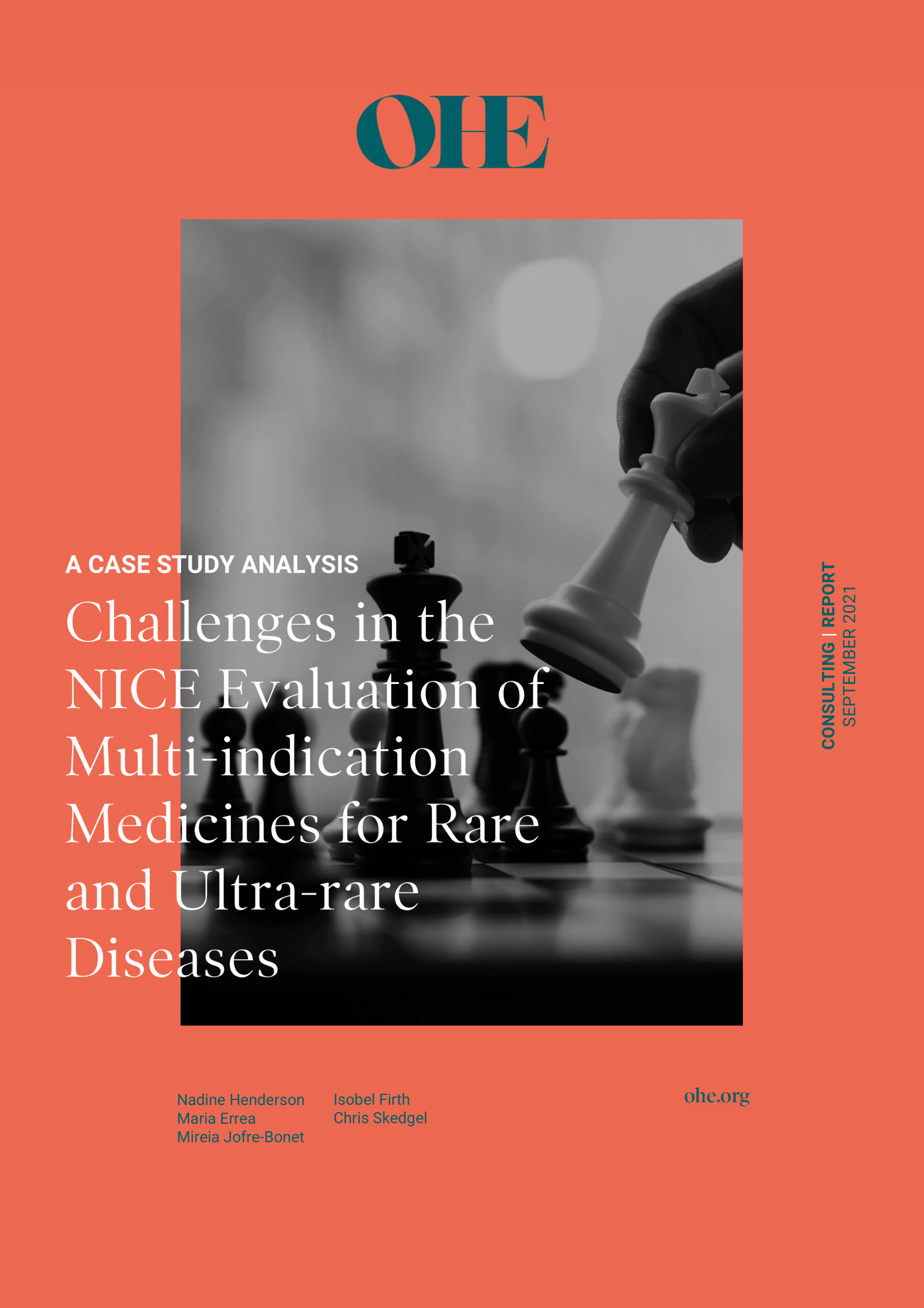
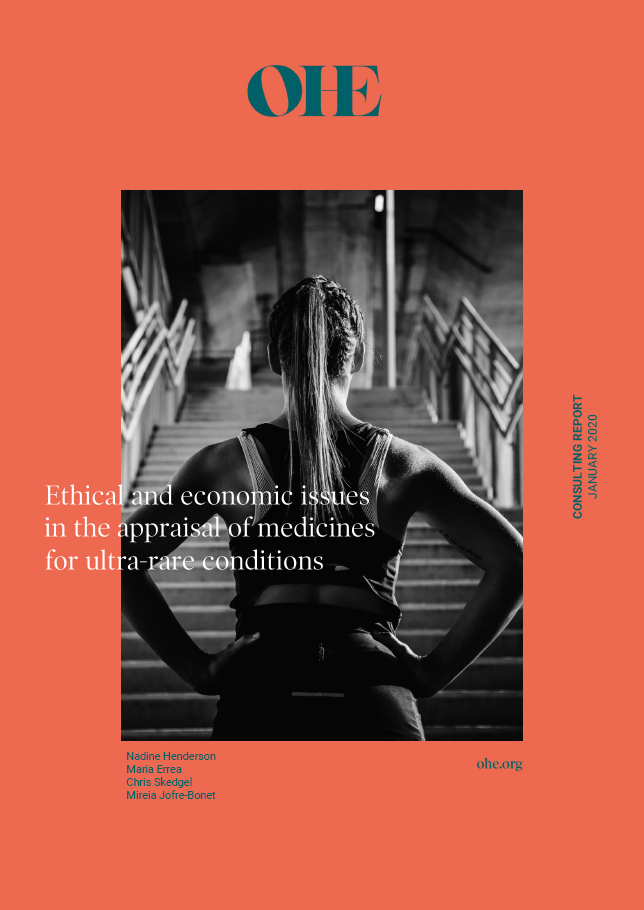
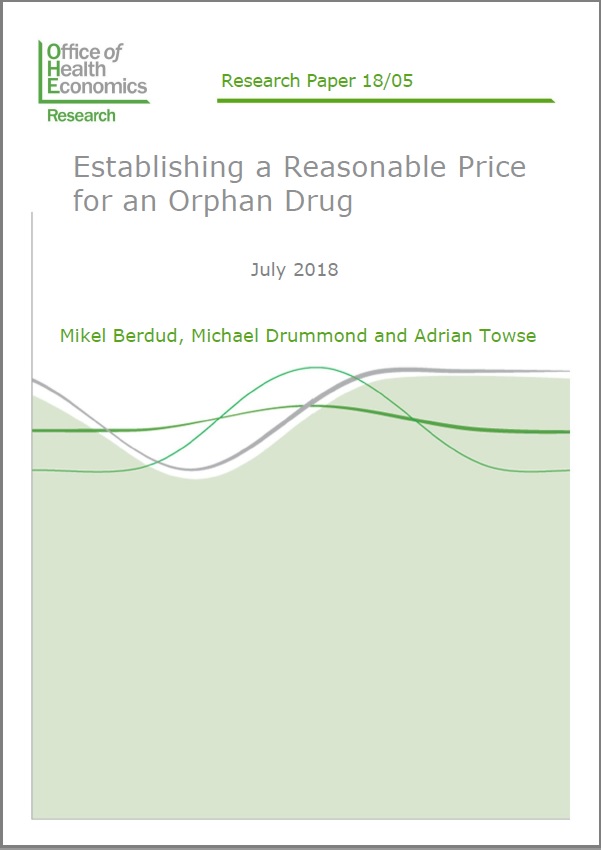
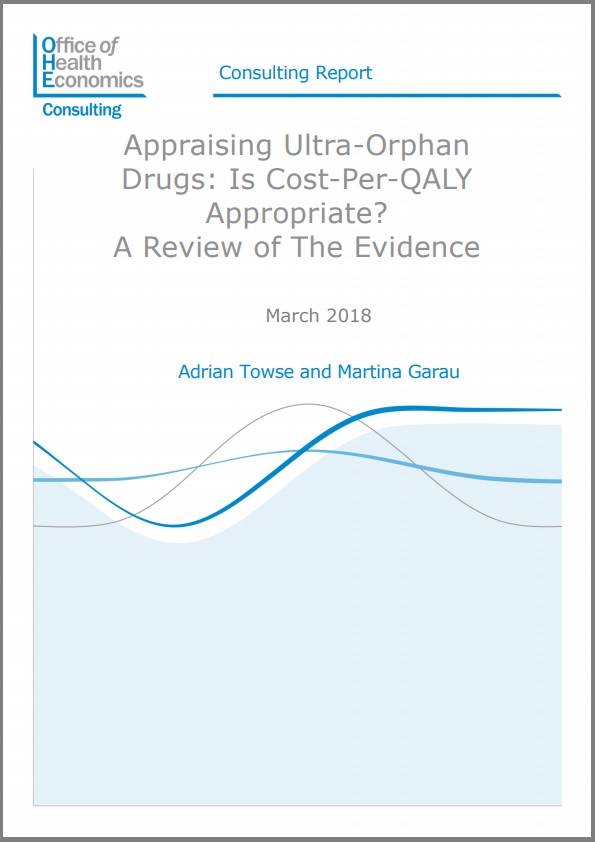
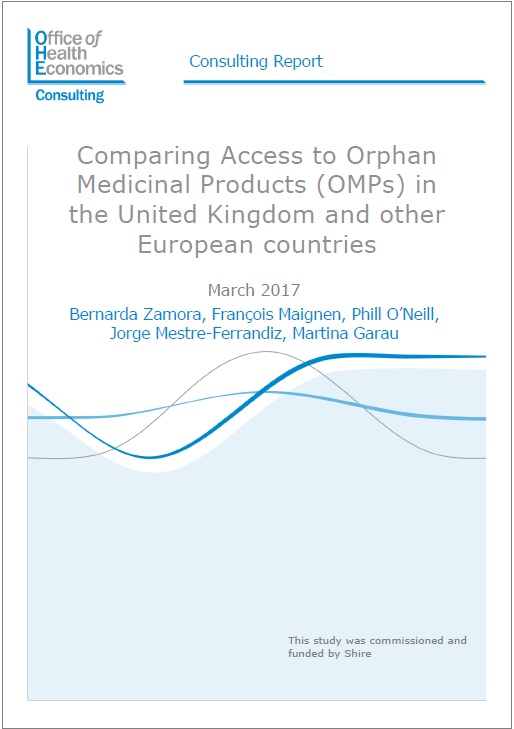
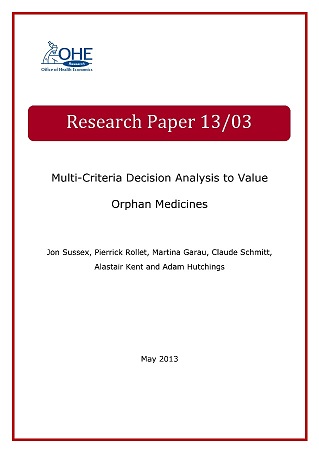
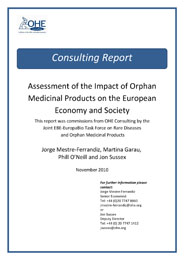
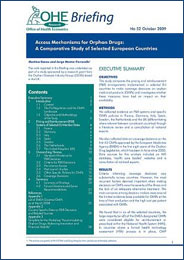

An error has occurred, please try again later.
This website uses cookies so that we can provide you with the best user experience possible. Cookie information is stored in your browser and performs functions such as recognising you when you return to our website and helping our team to understand which sections of the website you find most interesting and useful.
Strictly Necessary Cookie should be enabled at all times so that we can save your preferences for cookie settings.
If you disable this cookie, we will not be able to save your preferences. This means that every time you visit this website you will need to enable or disable cookies again.
This website uses Google Analytics to collect anonymous information such as the number of visitors to the site, and the most popular pages.
Keeping this cookie enabled helps us to improve our website.
Please enable Strictly Necessary Cookies first so that we can save your preferences!
